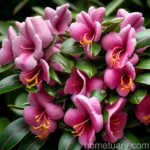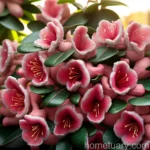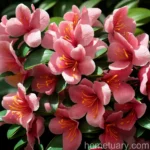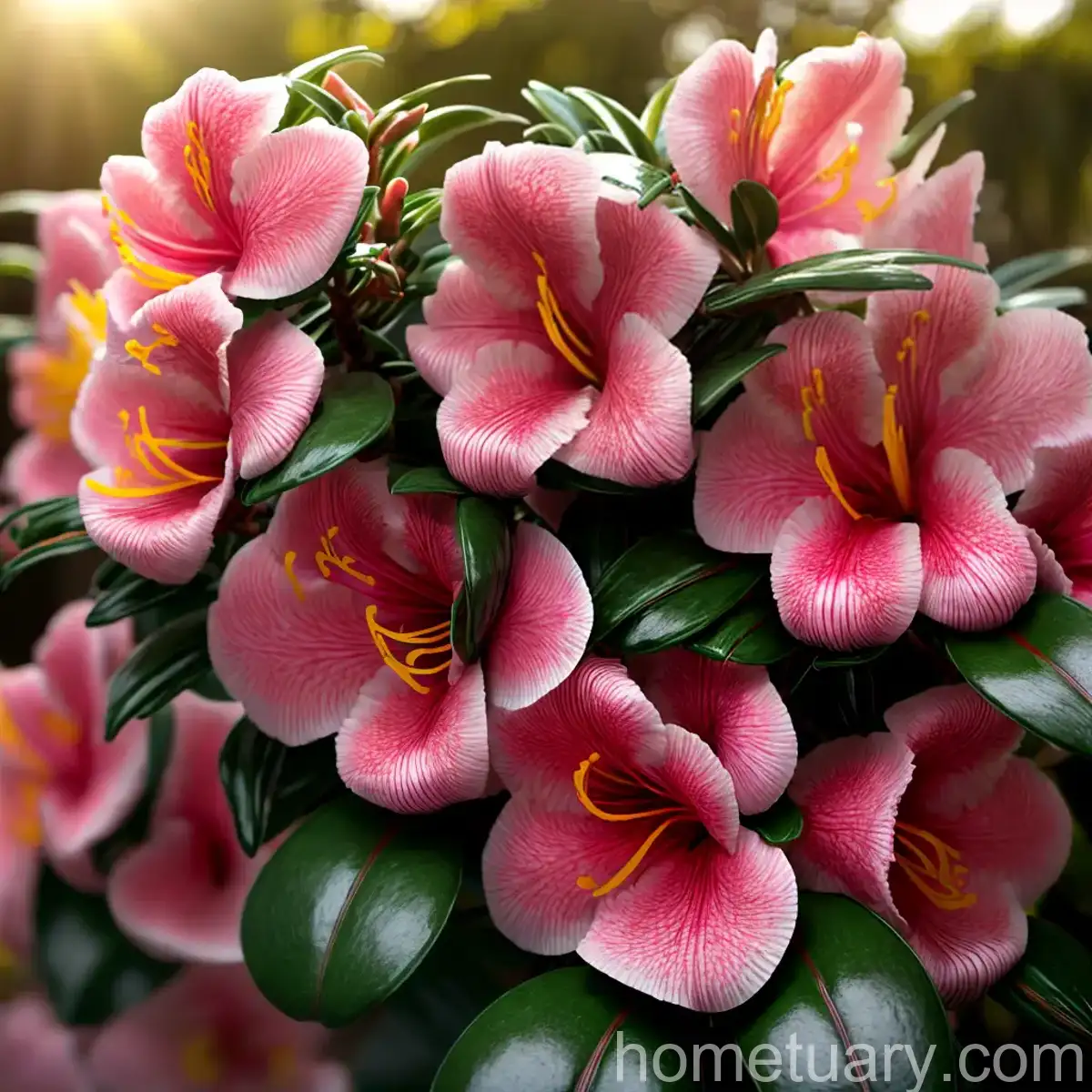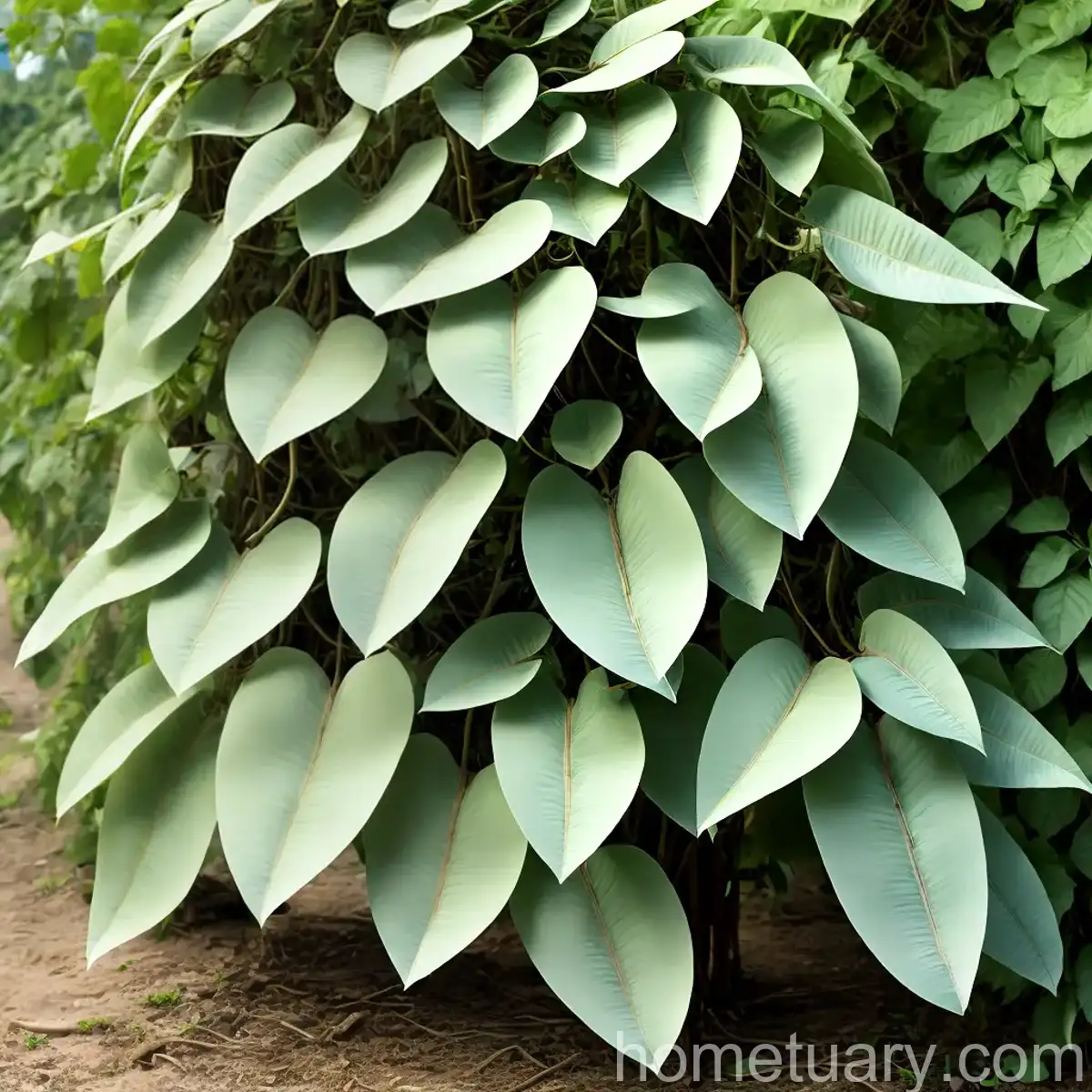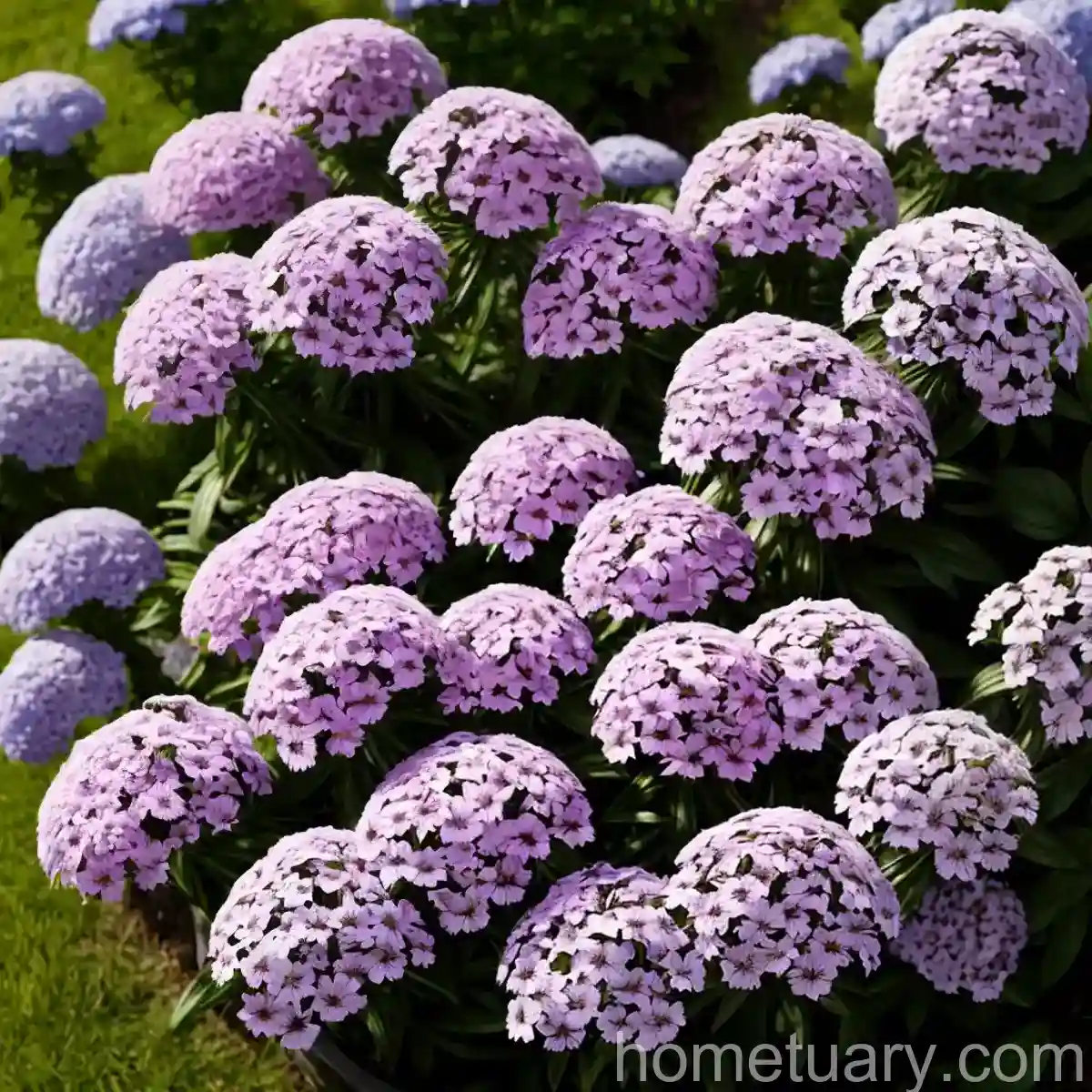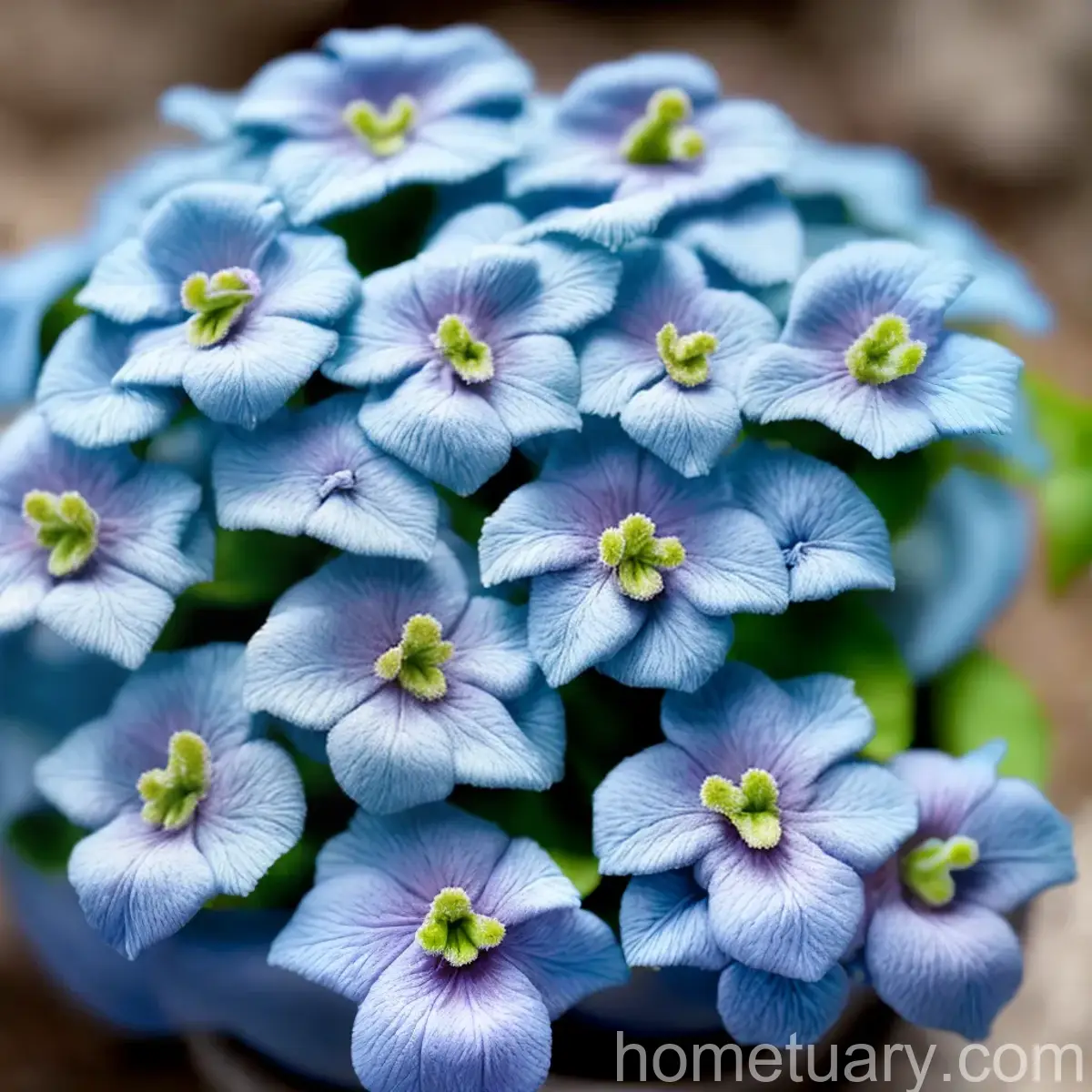The Evergreen Azalea (Rhododendron ‘Sun Star’): A Complete Guide
The evergreen azalea, scientifically known as Rhododendron ‘Sun Star’, is a stunning plant that adds beauty and elegance to gardens and landscapes. In this comprehensive guide, we will explore all aspects of caring for and cultivating this popular evergreen azalea variety. From its culture and uses to its water and sunlight requirements, soil preferences, propagation methods, and common diseases and pests, we will cover everything you need to know to successfully grow and maintain Rhododendron ‘Sun Star’. So, let’s dive into the world of evergreen azaleas and unearth the secrets to nurturing this captivating plant.
What is the Evergreen Azalea (Rhododendron ‘Sun Star’)?
The evergreen azalea, Rhododendron ‘Sun Star’, belongs to the genus Rhododendron and is a part of the Ericaceae family. Known for its vibrant and abundant blooms, this evergreen shrub is prized for its ornamental value and is a popular choice for gardens, borders, and landscaping projects.
Key Takeaways
Evergreen Azalea (Rhododendron ‘Sun Star’)
- Scientific Name: Rhododendron ‘Sun Star’
- Plant Type: Evergreen shrub
- Growth Habit: Compact and bushy
- Foliage: Dark green leaves
- Flowers: Showy, trumpet-shaped flowers in various colors
- Bloom Time: Spring to early summer
- Hardiness: Suitable for USDA hardiness zones 7-9
Now that we have a basic understanding of what the evergreen azalea is, let’s delve into the essential aspects of its care and cultivation.
Culture
Uses
Evergreen azaleas, including the ‘Sun Star’ variety, are primarily grown for their decorative purposes. These plants are ideal for:
- Adding vibrant color to gardens and landscapes
- Creating beautiful borders and hedges
- Enhancing the visual appeal of outdoor spaces
- Attracting pollinators such as bees and butterflies
Water
Proper watering is crucial for the health and vitality of evergreen azaleas. Here are some key points to consider:
- Regular Watering: Maintain consistent soil moisture, especially during periods of active growth and flowering.
- Avoid Waterlogging: Ensure good drainage to prevent waterlogging, which can lead to root rot and other issues.
- Mulching: Apply a layer of organic mulch around the base of the plant to help retain soil moisture and regulate temperature.
Sunlight
The ‘Sun Star’ evergreen azalea thrives in locations with the following sunlight conditions:
- Partial Shade: Prefers partial shade with dappled sunlight, especially in hot climates.
- Morning Sun: Morning sunlight is beneficial, while protection from intense afternoon sun is recommended.
- Filtered Light: Ideal for growing beneath trees or in locations with gentle, filtered light.
Fertilizer
Fertilizing evergreen azaleas can support healthy growth and prolific flowering. Consider the following fertilization tips:
- Acidic Fertilizer: Use a balanced, slow-release, acidic fertilizer specifically formulated for acid-loving plants.
- Timing: Apply fertilizer in early spring before new growth emerges, and again after the flowering period.
- Avoid Over-Fertilizing: Excessive fertilization can harm the plant, so follow recommended application rates.
Soil
The soil composition and pH level are critical factors for the well-being of Rhododendron ‘Sun Star’. Here’s what you need to know about soil preferences:
- Acidic Soil: Evergreen azaleas thrive in well-draining, acidic soil with a pH range of 5.0 to 6.0.
- Organic Matter: Incorporate organic material such as peat moss or compost to improve soil structure and acidity.
- Avoid Compaction: Ensure that the soil is loose and friable to facilitate root development and nutrient uptake.
Pruning
Pruning evergreen azaleas, including the ‘Sun Star’ variety, is essential for maintaining a pleasing shape and promoting flowering. Follow these pruning guidelines:
- Prune After Flowering: Trim the plant immediately after the blooming period to encourage branching and new growth.
- Remove Deadwood: Regularly inspect the plant and remove any dead or diseased branches to enhance overall health.
- Shape as Desired: Craft the plant’s form and structure according to your aesthetic preferences while maintaining its natural beauty.
Propagation
Propagating evergreen azaleas allows you to expand your collection or share these delightful plants with others. Consider the following propagation methods:
- Softwood Cuttings: Take softwood cuttings in late spring or early summer, and root them in a suitable growing medium.
- Air Layering: Encourage root formation on a stem while it is still attached to the parent plant, and then sever it to create a new plant.
- Division: Divide established azalea plants carefully to create new individuals, ensuring that each division has sufficient roots and foliage.
Container Popularity
Evergreen azaleas, including the ‘Sun Star’ variety, are well-suited for container planting. Here’s why they are popular choices for container gardening:
- Versatility: Containers offer flexibility in terms of placement and can be used to showcase azaleas on patios, balconies, and other outdoor spaces.
- Space Constraints: Ideal for individuals with limited garden space or those seeking to add greenery to urban environments.
- Aesthetic Appeal: The vibrant blooms and lush foliage of evergreen azaleas make them attractive additions to container displays.
Container Common Diseases
While evergreen azaleas can thrive in containers, it’s important to be aware of potential diseases that may affect them. Common container diseases include:
- Root Rot: Overwatering or poorly draining soil can lead to root rot, causing wilting and decline in the plant’s health.
- Powdery Mildew: A fungal disease that appears as a powdery white coating on leaves, affecting overall vigor and appearance.
- Botrytis Blight: This fungal disease causes brown spots on leaves and flowers, potentially leading to tissue decay.
Disease Diagnosis
Early diagnosis and prompt treatment are crucial for managing diseases in container-grown evergreen azaleas. Here are some indicators and symptoms to watch for:
- Discolored or Wilted Foliage: Changes in leaf color or texture may indicate a health issue, especially if accompanied by wilting.
- Abnormal Growth Patterns: Look for signs of stunted growth, distorted leaves, or reduced flowering, which could signal disease.
- Presence of Fungal Growth: Powdery mildew and other fungal diseases often manifest as visible growth on the plant’s surfaces.
Common Pests
Pests can pose a threat to evergreen azaleas, even when grown in containers. Some common pests to watch out for include:
- Azalea Lace Bugs: These small insects feed on plant sap, causing stippling and discoloration of leaves.
- Spider Mites: These tiny arachnids can infest azaleas, resulting in webbing and damage to foliage.
- Scale Insects: Scale insects may appear as small, raised bumps on the plant and can affect overall vigor.
Botanist’s Tips
To ensure the success of your evergreen azaleas, consider the following tips from botanists and experienced growers:
- Monitor Soil Moisture: Regularly check soil moisture levels, especially during hot and dry periods, and adjust watering accordingly.
- Use Acidifying Agents: If the natural soil pH is not sufficiently acidic, consider using soil amendments or acidifying fertilizers to create an ideal growing environment.
- Inspect for Pests: Routinely inspect plants for signs of pest infestations, and take proactive measures such as using horticultural oils or insecticidal soaps as needed.
Fun Facts
Here are some fascinating and perhaps lesser-known tidbits about evergreen azaleas:
- Some azalea varieties are fragrant, adding a delightful aroma to outdoor spaces during the blooming season.
- Evergreen azaleas are native to Asia and North America, with a rich cultural and horticultural history in these regions.
- The name “azalea” is derived from the Greek word “azaleos,” meaning dry, referring to the plant’s natural habitat in dry, rocky areas.
Links to External Resources
For further information and resources on evergreen azaleas and Rhododendron ‘Sun Star’, explore the following links:
- American Rhododendron Society
- Royal Horticultural Society – Azaleas and Rhododendrons
- University of Georgia Extension – Growing Azaleas
- North Carolina State University – Azaleas and Rhododendrons
- The Azalea Society of America
In conclusion, the evergreen azalea, specifically the ‘Sun Star’ variety, is a captivating and versatile plant that can thrive in various settings with the right care and attention. By understanding its cultural requirements, mastering effective maintenance practices, and staying vigilant against potential pests and diseases, you can enjoy the beauty of evergreen azaleas in your garden or landscape for years to come.
Remember to embrace the unique charm of Rhododendron ‘Sun Star’ and relish the joy it brings through its stunning blooms and lush foliage. Whether you’re a seasoned gardener or a beginner enthusiast, the allure of evergreen azaleas is bound to captivate you as you embark on this delightful horticultural journey.
So go ahead, plant your Rhododendron ‘Sun Star’ with confidence, and witness the enchanting allure of this timeless garden gem.
Connect with fellow enthusiasts, share your experiences, and continue learning from the wealth of knowledge available through trusted botanical organizations and resources. Happy gardening and may your evergreen azaleas flourish in all their glory!
Note: The information provided in this guide is intended for educational purposes and general reference. Specific recommendations and practices may vary based on local climate, soil conditions, and other environmental factors. Always consult local horticultural experts or extension services for tailored guidance and advice.




